Parents in Rural AP Are Rating Their Kids’ Schools Using Mobile Phones. Schools Are Falling in Line!
School Score Card, a digital school performance tracking tool, is helping parents in rural Andhra Pradesh hold government schools accountable for the quality of education. With a simple pictorial, SMS-based system, mothers in villages are rating schools and helping authorities apply corrective measures where needed.
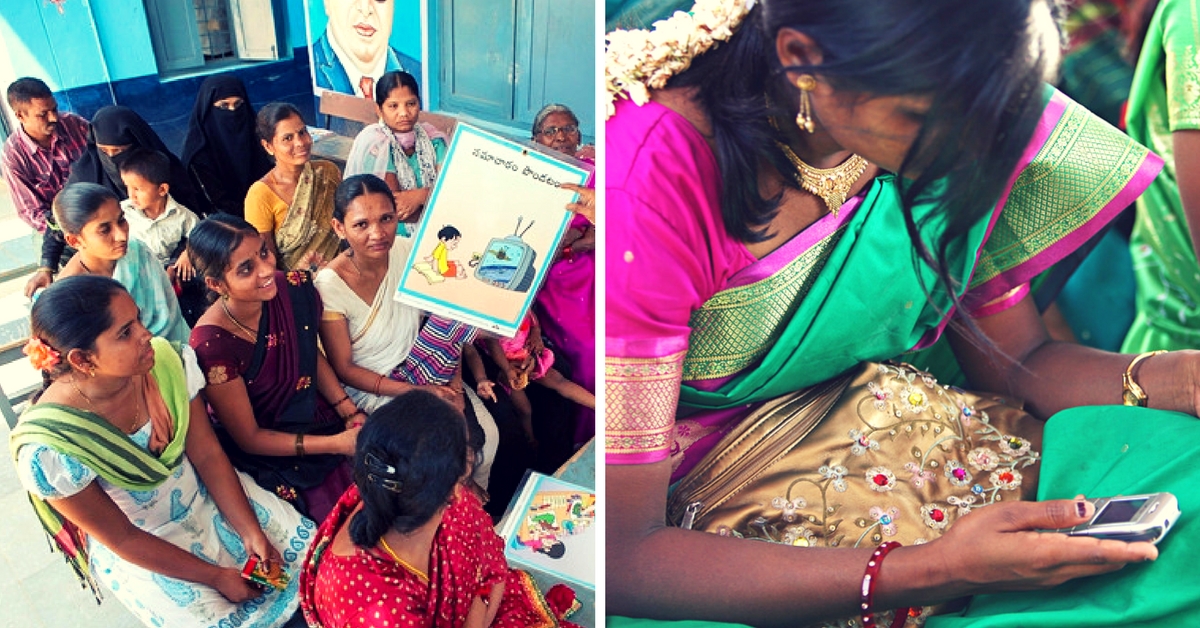
School Score Card, a digital school performance tracking tool, is helping parents in rural Andhra Pradesh hold government schools accountable for the quality of education. With a simple pictorial, SMS-based system, mothers in villages are rating schools and helping authorities apply corrective measures where needed.
“Earlier, we only learnt with the help of books and the blackboard. Now the teachers are using charts and pictures to help us understand topics better. They organise quiz competitions and give away prizes to encourage us. Teachers are also more regular,” says Annappa, a student of Class 3 in Dayyalakuntapalli village of Andhra Pradesh.
Given that there was a time when school authorities weren’t ensuring the best for their students and parents (many of whom could never go to a school, have high aspirations for their school-going children, but don’t know much about how their children are performing), something like this coming from a student is huge.
Just walk around a few more schools in the area and many parents will tell you that this noticeable change has come about because of a unique idea – the School Score Card (SSC). This is an easy-to-understand mobile-based pictorial visual tool for parents to rate schools.
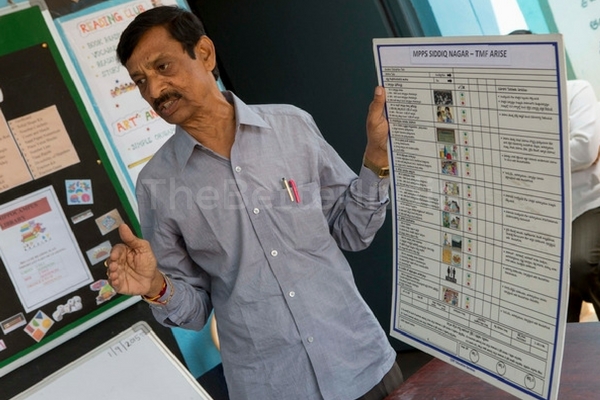
Parents of children going to government schools in rural India have to face several problems on a daily basis because many of them are not educated. Some of the problems include being hesitant about speaking to teachers, their inability to understand children’s report cards, failing to help their kids with studies, etc. This was the reality that led CfBT Education Services, a non-profit education services provider, to come up with SSC. “The score card was a part of a larger project by CfBT to explore how we could partner with the community to improve the quality of education. We started by working with many women self-help groups to increase awareness about the importance of education and admission of their children to schools. It was during this process that we realised the need for a simple tool that women could use to point out what is working or not working for their kids,” says Mr. GVS Prasad, Executive Director of CfBT. Starting with 60 schools in Anantapur district of Andhra Pradesh, SSCs have now reached 425 schools in the state.
Since most of the women the organization worked with were semi-literate or illiterate, SSC was introduced as a pictorial flash card system. CfBT set around 20 quality indicators like teacher attendance, nutritious meals, cleanliness, etc., for each school. These were depicted in the form of pictures on A3-sized flash cards inside the school building. The mothers then had to follow a simple traffic light rating system and rate the school based on these indicators.
If everything was functioning properly, they would check the green box. The amber box was for moderate levels and the red one in case the school needed massive improvement.

To simplify the rating process, CfBT then came up with an SMS-based platform with the same model. Now parents receive the pictorial indicators in the form of SMS messages and they have to press a few buttons to send their feedback. The messages get saved on a central server and the reports are sent to each school, and discussed during the School Management Committees (SMCs) meetings for identifying areas of improvement.
According to the Right to Education Act of 2009, all schools should have SMCs that meet every month to observe and discuss important school quality indicators.
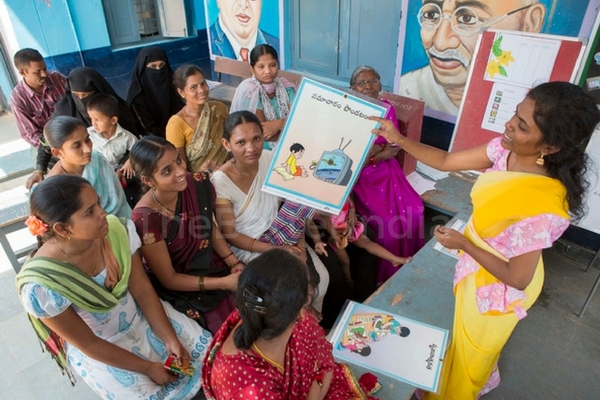
“Unfortunately, most of the times, these committees are not active or they are regulated by government officials, the local sarpanch, etc. This was the motivation for us. We thought that it would be best if we activate the SMCs and make mothers a part of it. Mothers are the direct consumers of education because no one is better equipped or more interested than them in the education of their children,” says Mr. Prasad. So CfBT started handing over the reports obtained from the parents to members of the SMCs. The organization also ensured that the government mandated it for each SMC to have two mothers in the committee. CfBT engages mothers of existing women’s self-help groups to become active members of the SMCs and encouraged them to use SSCs.
SMC members used this data to identify and act on areas of improvement. It was also shared with the District and State Education Departments for them to identify high-performing schools and schools that need corrective measures.
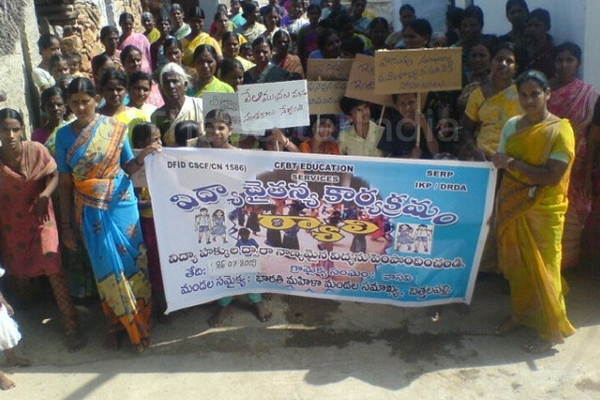
In this way, SSC is empowering women to take collective action and hold schools accountable. Many schools have seen improvement in the quality of education, attendance of students and teachers, midday meals, etc.
“I was scared to go to my kids’ school. Now after the SMC meeting and use of SSCs, mothers like me are more confident. We understand how to demand improvements over time. I can feel that my children are regular at school as the teachers are coming daily. They use many games and models to make learning fun. Earlier my children used to get D grade. Now it is B grade, and sometimes A grade too. They can actually read aloud fluently and get correct change from the market. I feel proud that now I am able to get good quality education for my children,” says Anasuya, a mother of three children in Bullasamudram village.
CfBT is the Indian affiliate of a 50-year-old organization based in the UK that was set up with the purpose of promoting education worldwide.
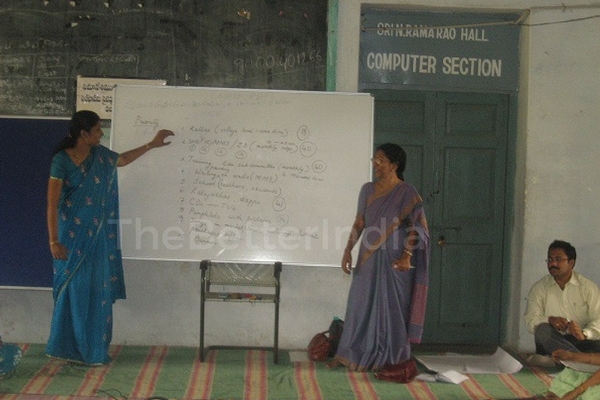
The organization started functioning in India in the year 2002, with a research project on public-private partnerships in the field of education in India. Recently, CfBT received a grant from the NASSCOM Social Innovation Forum (NSIF) to take the SSC project forward.
“With this grant, we intend to cut down the time that it takes for the feedback to reach the server and the data to be processed to generate the report. Since most of the mothers are already using mobile phones, we want to convert the model into an app. This will help in generating reports instantly. Additionally, all the information will be on the cloud so anyone in the hierarchy can access it,” says Mr. Prasad.
Digital innovations like these are helping take quality education to all parts of India.

Picture for representation only. Source: Flickr
While SSC is helping parents keep schools on track, a similar initiative named digi-TEACH is helping train teachers across the country. Developed by Humana People to People India (HPPI), a development organization, digi-TEACH is a software-based programme for training primary school teachers. It enhances the skills of teachers in a holistic manner, with programmes covering subject knowledge, soft skills, and general knowledge. The teaching material is available on software that needs to be uploaded on computers, laptops, etc. There is a set of tasks and courses that the teachers need to complete. Teachers can use a progress tracking and feedback system to map their development too. “The digi-Teach programme has helped me develop as a teacher by improving my presentation, observation and leadership skills. It guides me to self-navigate the learning process through the digital library of study materials available at the click of a button,” says Ayushi Bhati, a teacher from Faridabad.
“Technology can help in scaling up interventions, improve learning outcomes and deliver quality education to the underserved. NASSCOM Social Innovation Forum has been able to identify not-for-profit organisations like CfBT and Humana People to People who are working in some of the poorest regions of India. They have demonstrated how technology is being used to effectively monitor delivery of education, motivate teachers and also to empower the community including illiterate parents to take charge of reducing the drop-out rate. Mphasis, as part of its CSR is committed to invest its resources in technology based interventions in the area of education and livelihoods and hopes that such initiative are able to deepen the positive impact on communities,” says Dr. Meenu Bhambhani, VP & Head CSR, Mphasis –the donor organization for CfBT and HPPI.
If you have created a technology-based solution that has the power to change the world and address an important social issue, you too can apply and let your solution achieve its true potential. Find out about the process here and apply by clicking below.
Unable to view the above button? Click here
Like this story? Or have something to share? Write to us: [email protected], or connect with us on Facebook and Twitter.
NEW: Click here to get positive news on WhatsApp!
This story made me
- 97
- 121
- 89
- 167
Tell Us More
We bring stories straight from the heart of India, to inspire millions and create a wave of impact. Our positive movement is growing bigger everyday, and we would love for you to join it.
Please contribute whatever you can, every little penny helps our team in bringing you more stories that support dreams and spread hope.



















